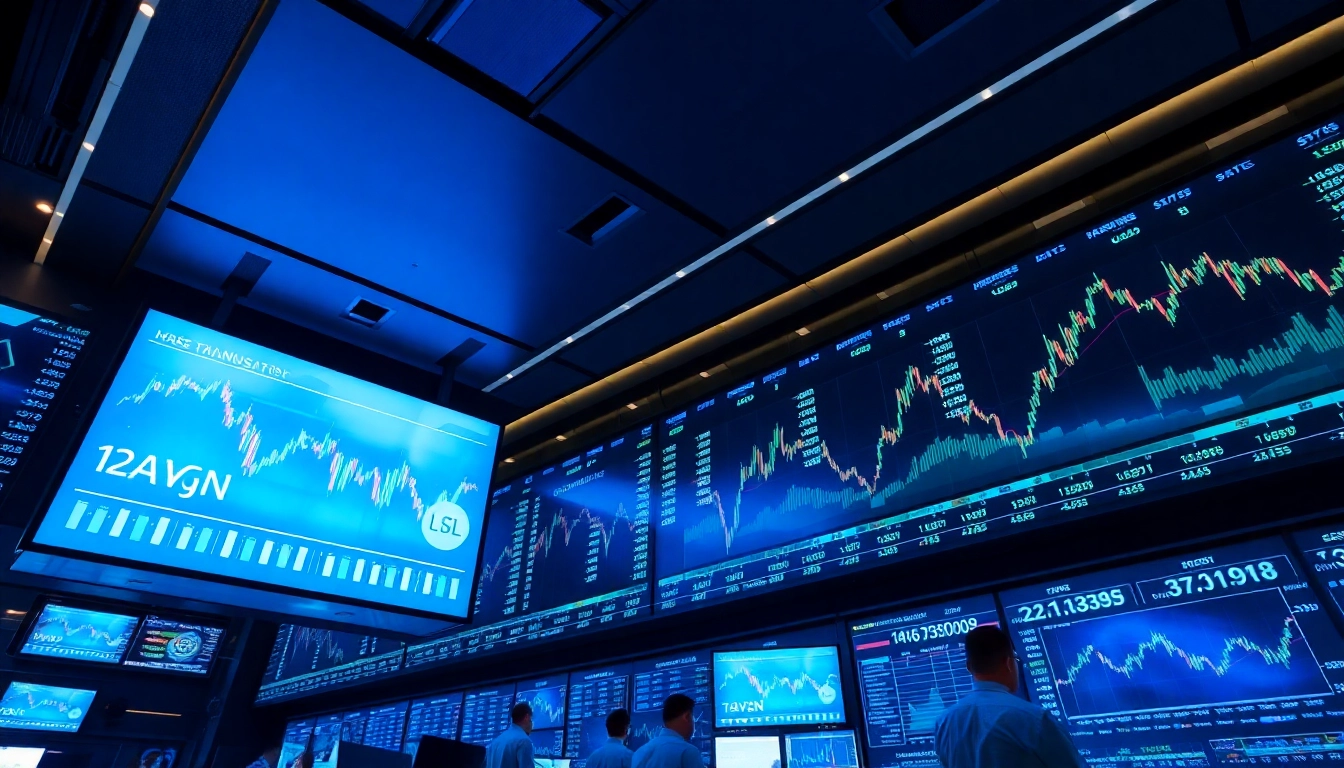Understanding Trading View and Its Core Features
In the rapidly evolving world of financial trading, having access to a reliable and comprehensive market analysis platform is essential. trading view has emerged as a leading tool that empowers traders and investors with real-time data, advanced charting, and a vibrant community-driven environment. Serving millions worldwide, its platform combines technical analysis tools, social interaction, and seamless integration with trading strategies, making it a vital resource for both beginners and professional traders.
Overview of Trading View as a Market Analysis Tool
TradingView is more than just a charting software; it is an all-in-one social and analytical hub that consolidates data across various financial markets, including stocks, cryptocurrencies, forex, commodities, and indices. Its intuitive web-based interface allows users to visualize complex data through customizable charts, indicators, and drawing tools, all accessible from any device with an internet connection. Unlike traditional trading platforms limited to broker portals, TradingView offers a unified environment where traders can perform analysis, share ideas, and execute trades via integrated broker connections.
The platform’s core strength lies in its ability to aggregate real-time market data from global exchanges and present it through advanced visualization techniques. Moreover, it fosters a collaborative atmosphere where traders exchange strategies, commentaries, and insights, enriching individual analyses. This community aspect, coupled with extensive charting capabilities, distinguishes TradingView as an indispensable tool in modern trading.
Key Features and Functionality for Traders
Comprehensive Charting Tools
TradingView offers an expansive suite of chart types, including candlestick, line, bar, and Heikin-Ashi, among others. Users can layer multiple charts, customize timeframes from one-minute to monthly views, and apply an array of technical indicators—such as moving averages, RSI, MACD, Bollinger Bands, and Fibonacci retracements—to analyze market trends effectively.
Powerful Drawing and Annotation Tools
With a variety of drawing tools—trend lines, channels, patterns, and text annotations—traders can mark key levels and visualize hypotheses directly on their charts. This visual clarity aids in pattern recognition and strategic planning, fostering better decision-making.
Social and Community Features
One of TradingView’s defining features is its vibrant community platform, where traders publish ideas, comment, and collaborate. Community-sourced ideas can serve as valuable insights or starting points for individual analysis. Additionally, users can follow trusted analysts, participate in chat groups, and gain exposure to diverse trading perspectives.
Custom Alerts and Automated Trading
TradingView allows users to set real-time alerts based on price levels, indicator triggers, or drawing tools, ensuring traders stay informed without constantly monitoring the markets. Its alert system integrates with email, SMS, or push notifications. Advanced users can leverage its scripting language, Pine Script, to develop automated strategies and backtest trading ideas directly within the platform.
Seamless Integration and Accessibility
The platform supports integration with multiple brokers, enabling traders to execute orders directly from charts. Its cloud-based architecture ensures full accessibility across desktops, tablets, and smartphones, maintaining productivity on the go.
How to Use Trading View for Effective Market Analysis
Setting Up Custom Charts and Indicators
Begin by selecting your preferred market asset and time frame. Customize your chart with technical indicators suitable for your trading style—whether it’s trend following or mean reversion. Use multi-timeframe analysis to confirm signals and refine your entry and exit points.
To enhance clarity, utilize drawing tools like trend lines or Fibonacci levels, marking key support and resistance zones. Saving these setups as templates accelerates analysis and promotes consistency.
Leveraging Trading View’s Social Trading and Community Ideas
Explore trending ideas published by experienced traders, evaluate their reasoning, and incorporate insights into your analysis. Engaging with community comments can reveal alternative viewpoints and market sentiment, enriching your understanding. Remember to verify ideas through your own analysis before acting on them.
Utilizing Alerts and Automated Trading Tools
Configure alerts for specific price levels, indicator crossovers, or pattern formations. For example, setting an alert on a moving average crossover can signal potential trend changes. Advanced traders can develop custom scripts using Pine Script to automate trading signals, backtest strategies, and fine-tune automated entries and exits based on historical data.
Advanced Techniques for Trading View Users
Implementing Technical Analysis with Trading View
Mastery of technical analysis on TradingView involves combining multiple indicators and chart patterns to anticipate market moves. Confirm signals with volume analysis, divergence, and momentum indicators. For example, identifying a bullish divergence between price and RSI can hint at a potential reversal.
Custom Scripts and Pine Editor for Personalized Strategies
Pine Script, TradingView’s scripting language, allows traders to create and test custom indicators and trading algorithms. Beginners can start with pre-built scripts shared by the community, while advanced users can develop nuanced strategies tailored to specific asset classes or trading styles. Proper backtesting and optimization ensure robustness before live deployment.
Cross-Platform Access and Mobile Trading Optimization
TradingView’s mobile apps for iOS and Android provide full-featured charting and alert capabilities, letting traders stay engaged anywhere. Synchronize your setup across devices to maintain analysis continuity and execute trades efficiently, capitalizing on market opportunities wherever you are.
Troubleshooting Common Issues and Maximizing Platform Performance
Enhancing Chart Loading Speed and Stability
To reduce lag, clear unused indicators, lower the number of active overlay charts, and avoid excessive historical data. Utilizing a stable internet connection and updating your browser or app ensures optimal performance.
Managing Account Settings and Subscription Plans
TradingView offers multiple tiers—from free to premium subscriptions. Evaluate features like increased indicators per chart, multiple layouts, and extended alert limits to determine the best plan tailored to your trading needs. Regularly review your account settings to optimize notifications and data preferences.
Staying Updated with Trading View’s Latest Features
Subscribe to official updates, join webinars, and participate in community forums to stay abreast of new tools, scripting functionalities, and platform integrations. Early adoption of new features can provide a competitive edge in your trading strategies.
Case Studies and Practical Applications of Trading View
Real-World Trading Scenarios Using Trading View
For instance, a day trader might use TradingView to identify breakout patterns with Bollinger Bands and volume confirmation, setting alerts to act swiftly. Similarly, a swing trader could combine Fibonacci retracement levels with trend lines to time entries during weekly trend shifts.
Success Stories from Professional Traders
Many seasoned traders attribute part of their success to the platform’s analytical depth and community insights. By sharing ideas, analyzing diverse opinions, and continuously refining strategies, professionals leverage TradingView to enhance their decision-making process and manage risk effectively.
Integrating Trading View with Other Financial Tools
To maximize trading efficiency, integrate TradingView with third-party analytical tools or automated trading platforms via APIs. This synchronization enables comprehensive portfolio monitoring and rapid execution, bridging the gap between analysis and action.









